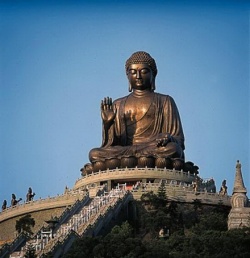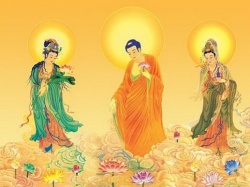The concept of reincarnation
Reincarnation is accepted amongst Buddhist and Westerner belief systems as an after life journey to be reborn in another body. This maybe the Hindu and New age concept, but not Buddhist. People often turn to religion for doctrines that provide simple answers to difficult questions. Buddhism doesn’t work that way. Believing in some doctrine about reincarnation or rebirth has no purpose. Buddhism is a practice that enables experiencing illusion as illusion and reality as reality. .The concept of reincarnation is closely linked with the spiritual law of karma in the sense that you are subject to retribution, which is also a concept taught by New Agers. This seems to be a constant that exists throughout the Buddhist faith. Furthermore, in Buddhism, reincarnation takes on a new meaning. The Buddhist principle of reincarnation is founded upon the premise of energy and the fact that energy can be reformulated into anything. This means that if you were to be reborn, you would not necessarily be reborn as another person; you could incarnate as an insect such as a worm. This is anything but true. The intermediate person who makes the passage in this way from one existence to the next is formed, like every living person, of the five aggregates (skandha). Ir is said that it take 100 days to transmigrate. This is called the Bardo Stage. There are six Bardos.
1. Shinay bardo (Tibetan): is the first bardo of birth and life. This bardo commences from conception until the last breath, when the mindstream withdraws from the body.
2. Milam bardo (Tibetan): is the second bardo of the dream state. The Milam Bardo is a subset of the first Bardo. Dream Yoga develops practices to integrate the dream state into Buddhist sadhana.
3. Samten bardo (Tibetan) is the third bardo of meditation. This bardo is generally only experienced by meditators, though individuals may have spontaneous experience of it. Samten Bardo is a subset of the Shinay Bardo.
4. Chikkhai bardo (Tibetan): is the fourth bardo of the moment of death. According to tradition, this bardo is held to commence when the outer and inner signs presage that the onset of death is nigh, and continues through the dissolution or transmutation of the Mahabhuta until the external and internal breath has completed.
5. Chönyid bardo (Tibetan): is the fifth bardo of the luminosity of the true nature which commences after the final ‘inner breath’ (Sanskrit: prana, vayu; Tibetan: rlung). It is within this Bardo that visions and auditory phenomena occur. In the Dzogchen teachings, these are known as the spontaneously manifesting Thödgal (Tibetan: thod-rgyal) visions. Concomitant to these visions, there is a welling of profound peace and pristine awareness. Sentient beings who have not practiced during their lived experience and/or who do not recognize the clear light (Tibetan: od gsal) at the moment of death are usually deluded throughout the fifth bardo of luminosity.
6. Sidpa bardo (Tibetan): is the sixth bardo of becoming or transmigration. This bardo endures until the inner-breath commences in the new transmigrating form determined by the ‘karmic seeds’ within the storehouse consciousness.
That is why there is a 100 day service after someone dies. Originally bardo referred only to the period between one life and the next, and this is still its normal meaning when it is mentioned without any qualification. There was considerable dispute over this theory during the early centuries of Buddhism, with one side arguing that rebirth (or conception) follows immediately after death, and the other saying that there must be an interval between the two. With the rise of mahayana, belief in a transitional period prevailed. Later Buddhism expanded the whole concept to distinguish six or more similar states, covering the whole cycle of life, death, and rebirth. But it can also be interpreted as any transitional experience, any state that lies between two other states. Its original meaning, the experience of being between death and rebirth, is the prototype of the bardo experience, while the six traditional bardos show how the essential qualities of that experience are also present in other transitional periods. By refining even further the understanding of the essence of bardo, it can then be applied to every moment of existence. The present moment, the now, is a continual bardo, always suspended between the past and the future. Not all Buddhists believe in reincarnation. There are many afterlife theories from many religions.

